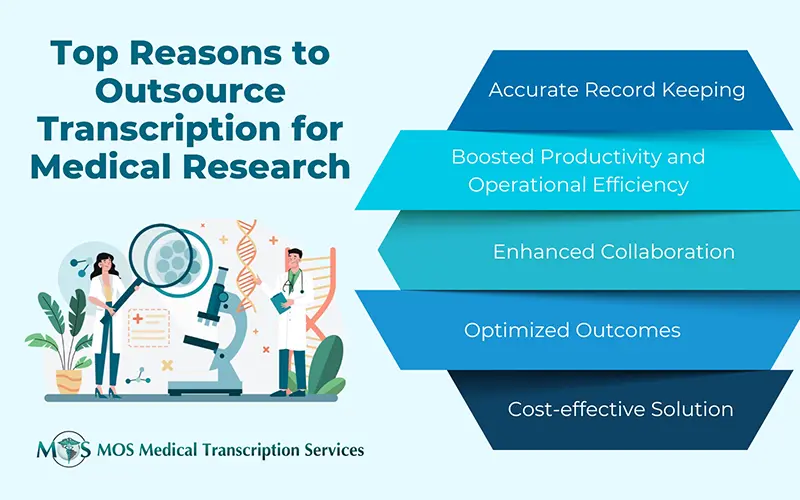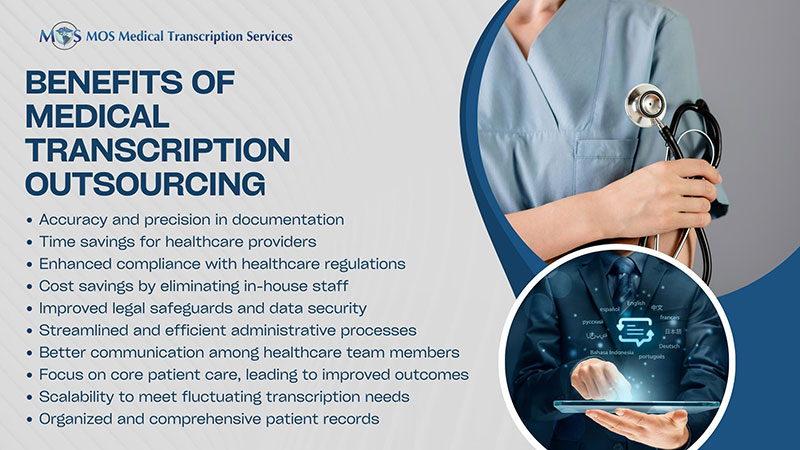
Electronic health records (EHRs) improve the physician’s ability to diagnose patients’ problems sooner and reduce or even prevent medical errors, improving treatment outcomes. Many providers rely on medical transcription outsourcing to document voice recordings into EHRs.
EHRs can improve diagnostics and support better patient outcomes only if the provider has access to complete and accurate health information. However, EHR Intelligence recently reported on a study that found significant problems with physician EHR use. The researchers noted discrepancies between EHR documentation and what actually happened at clinical encounters. The study was based on an observation of nine resident emergency physicians over 180 patient encounters in two academic medical centers between 2016 and 2018. The key points of the research which was published in September in JAMA Network Open are as follows:
- The researchers shadowed the physicians for 20 encounters (10 encounters per physician per test site) to obtain real-time data and reviewed associated EHR data.
- Five types of data were collected: descriptive data about encounters and participants; review of systems (ROS) observation data (audiotape); observed physical examination (PE) activities, documented concurrently on standardized forms; ROS documentation in the EHR; and PE documentation in the EHR.
- The participant physicians’ real-time performance was compared with clinical documentation.
- Comparison of two error-prone sections of the EHR — documentation of review of systems (ROS) and physical examination — with happened during an encounter matched only 38 and 53 percent of the time, respectively.
- There was little difference in results between the two test sites.
Concluding that there were inconsistencies between the physicians’ EHR documentation and the actual ROS and PE reports, the researchers wrote,
“This study demonstrated inconsistencies between resident physician documentation and observed behavior. Furthermore, the relevance analysis, in which the reason for visit was cross-tabulated against the percentage of unsubstantiated physical examination by body system, demonstrated that unsubstantiated documentation is more common when it may be less clinically relevant.”
According to the researchers, their results raise the possibility that some documentation may not accurately represent physician actions. They recommended that further studies should be undertaken in other clinical settings to discover if this occurrence is widespread.
The researchers also speculated on the reasons for the variance between EHR documentation and actual ROS and PE reports.
- Rapid replacement of paper records with electronic: One reason could be rapid adoption of EHR in an industry that has traditionally used paper records. When a healthcare facility moves patient data from paper records to the EHR, quality checks are necessary at each step to ensure accuracy and integrity of the data. However, the study points out that there are been investigation into the accuracy of physician documentation.
- Burdensome payer documentation requirements: Another reason for the mismatch between EHR documentation and clinical encounters could be burdensome reporting requirements. Payers are found to provide financial incentives to generate lengthy documentation, but these reporting requirements may not be feasible for EHR users due to their heavy workflows.
In the 2020 physician fee schedule released in July, the Centers for Medicare and Medicaid Services (CMS) focuses on reducing the administrative burden on physicians, including work involving electronic health records (EHRs). In fact, the American Hospital Association (AHA) made the following recommendation to CMS on the matter: “Remove requirements that result in providers repeating one another’s documentation and instead develop documentation and/or payment requirements that enable providers to produce a single, synthesized, dynamic patient narrative, such as by allowing a primary care or admitting physician to enter a patient’s history and requiring subsequent providers to review and confirm the accuracy of the history and add only the information that may expand on or change the patient story.”
Many studies have also looked into physician stress and burnout associated with EHR use. Physicians are not trained in data entry, and this can be all the more challenging in the office setting where they need to focus on arriving at a correct diagnosis and providing quality treatment. One study found that for every hour physicians spent in direct contact with patients, 2 more hours are spent on electronic health record (EHR) and desk work (Annals of Internal Medicine, September 6, 2016).
Using scribes or medical transcription services can reduce the EHR-related administrative burden associated with EHR use, improve levels of physician satisfaction, and allow for better focus on patients. While medical transcription companies are not onsite, their clinical documentation support is very valuable for all specialties. They are well-equipped to provide ensure timely and accurate clinical documentation with feeds to EHRs. With HIPAA-compliant medical transcription service providers, physicians do not have to worry about the confidentiality of PHI (Protected Health Information).


